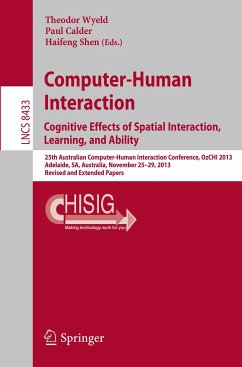
EFFECTS OF CULTURAL BACKGROUND OF USERS ON INTERFACE USABILITY
A Case Study
Versandkostenfrei!
Versandfertig in 6-10 Tagen
32,99 €
inkl. MwSt.

PAYBACK Punkte
16 °P sammeln!
Over the past few decades, with an increase in technological innovation and world becoming a Global Village', a single interface or product may be used by individuals from varied nationalities. Since the early 1980s, researchers have demonstrated how the perception of icons, symbols, colors, and layout differs across cultures. Various terms like Culturability' and Cultural Markers' have been created to emphasize the relationship between culture and usability. In context of these developments, the experiment explores differences in perceived interface usability based on cultural dimensions as d...
Over the past few decades, with an increase in technological innovation and world becoming a Global Village', a single interface or product may be used by individuals from varied nationalities. Since the early 1980s, researchers have demonstrated how the perception of icons, symbols, colors, and layout differs across cultures. Various terms like Culturability' and Cultural Markers' have been created to emphasize the relationship between culture and usability. In context of these developments, the experiment explores differences in perceived interface usability based on cultural dimensions as defined by Geert Hofstede.The study was conducted for two cultures, namely, India and United States and user satisfaction as well efficiency of the users was measured during the experiment.The results of the study are discussed as well as areas for future research are explored.












